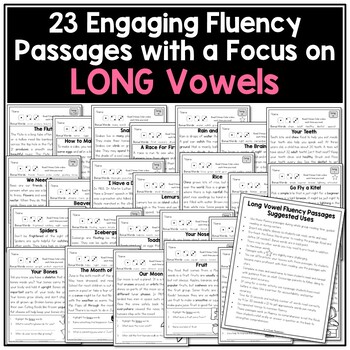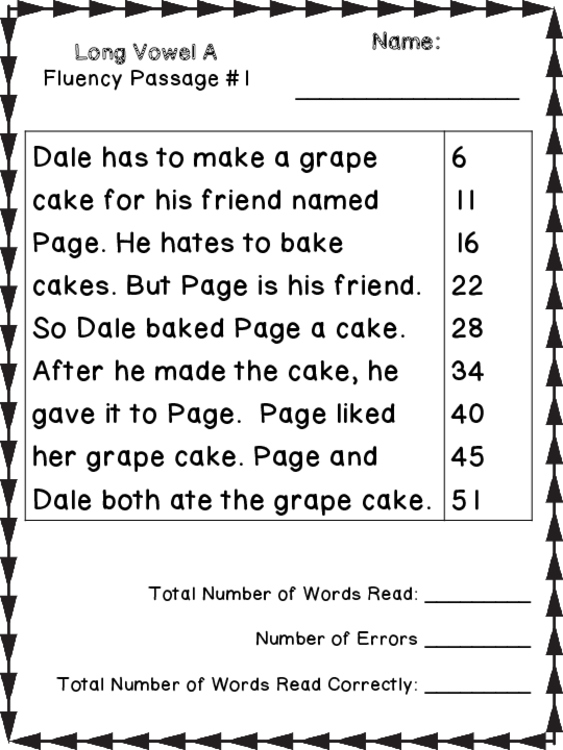Long Vowel Passages
If you're a language learner or a teacher, you might be familiar with the concept of long vowel passages in English language. Whether you're just starting out or you have experience with teaching or learning English, long vowel passages can be a valuable tool for improving your skills and comprehension. In this post, we'll explore what long vowel passages are, who they benefit, and how you can use them effectively.
Common Struggles with Reading and Pronouncing Long Vowels
Many language learners and students struggle with reading and pronouncing long vowel sounds. This can lead to frustration and difficulty with comprehension, which can in turn impact overall progress. Common struggles with long vowels include difficulty distinguishing between long and short vowel sounds, confusion over the rules for pronouncing long vowels, and difficulty with decoding longer words that contain long vowels.
What are Long Vowel Passages?
Long vowel passages are resources for language learners that focus on reading and comprehension of words and sentences containing long vowels. These passages typically include context clues and other tools to help students understand how to read and pronounce long vowels correctly, and to build their comprehension skills over time. They are a valuable tool for both teachers and learners looking to improve their English language skills and gain confidence in their ability to read and decode complex words and sentences.
Key Benefits of Long Vowel Passages
There are several key benefits to using long vowel passages in English language learning and teaching:
- Improved comprehension skills
- Increased confidence with reading and decoding long words
- Better retention of language rules and grammar
- Opportunities to practice and reinforce skills in a fun and engaging way
How to Use Long Vowel Passages Effectively
To use long vowel passages effectively, it's important to choose passages that are appropriate for the learner's current language level and to establish a consistent practice routine. Incorporating long vowel passages into regular lesson plans or study sessions can help learners build their skills over time, and can also provide opportunities for teachers to evaluate progress and adjust their teaching strategies accordingly.
One effective way to use long vowel passages is to read them aloud and practice pronouncing the long vowel sounds. Additionally, learners can practice identifying the long vowel sounds in context and using them in their own speech and writing. This can help reinforce the rules for long vowel sounds and build confidence with reading and speaking English.
Personal Experience with Long Vowel Passages
As a language learner myself, I have found long vowel passages to be an indispensable tool for building my English language skills. By focusing specifically on long vowel sounds, these passages have helped me improve my pronunciation and gain confidence with more complex words and sentences. Additionally, I've found that incorporating long vowel passages into regular study sessions has helped me retain grammar rules and learn to read and write more effectively.
Q&A: Common Questions About Long Vowel Passages
Q: How can I identify long vowel sounds in words?
A: Long vowels are typically pronounced for an extended period of time, and are often indicated in written English by a double vowel (such as "ee" or "oo") or a vowel with a silent "e" at the end of the word.
Q: How often should I practice with long vowel passages?
A: As with any language learning activity, consistency is key. Aim to practice with long vowel passages at least once per week, and consider incorporating them into regular lessons or study sessions to build your skills over time.
Q: Can long vowel passages be useful for advanced language learners?
A: Absolutely. While long vowel passages are particularly useful for beginner and intermediate learners, they can also be a valuable tool for advanced learners looking to fine-tune their pronunciation and comprehension skills.
Q: Are long vowel passages useful for teaching children?
A: Yes. Long vowel passages can be a valuable tool for teaching children to read and pronounce words with long vowel sounds, and can also be a fun and engaging way to reinforce language rules and comprehension skills.
Conclusion
Long vowel passages are a valuable resource for language learners and teachers looking to improve their English language skills. By focusing specifically on long vowel sounds, these passages can help learners build their confidence with complex words and sentences, and improve their comprehension and retention of language rules and grammar. To use long vowel passages effectively, establish a consistent practice routine and choose passages that are appropriate for the learner's current language level. With regular practice and diligent study, learners of all ages and proficiency levels can see significant improvement in their English language skills.
Gallery
Long Vowel Reading Passages: Personalized Comprehension Passages

Photo Credit by: bing.com / passages vowel
Long Vowel Interactive Reading Passages By A Teachable Teacher | TpT

Photo Credit by: bing.com / passages reading long interactive vowel preview
All-in-One Reading Passages - Long Vowels Edition - A Teachable Teacher

Photo Credit by: bing.com / passages vowels phonics teachable
Fluency Passages For Long Vowels By 1st Grade Pandamania | TpT

Photo Credit by: bing.com / long passages fluency vowels grade vowel 1st preview
Long Vowel A Fluency, Comprehension, Decoding And Assessments! By

Photo Credit by: bing.com / vowel comprehension fluency phonics decoding spelling
